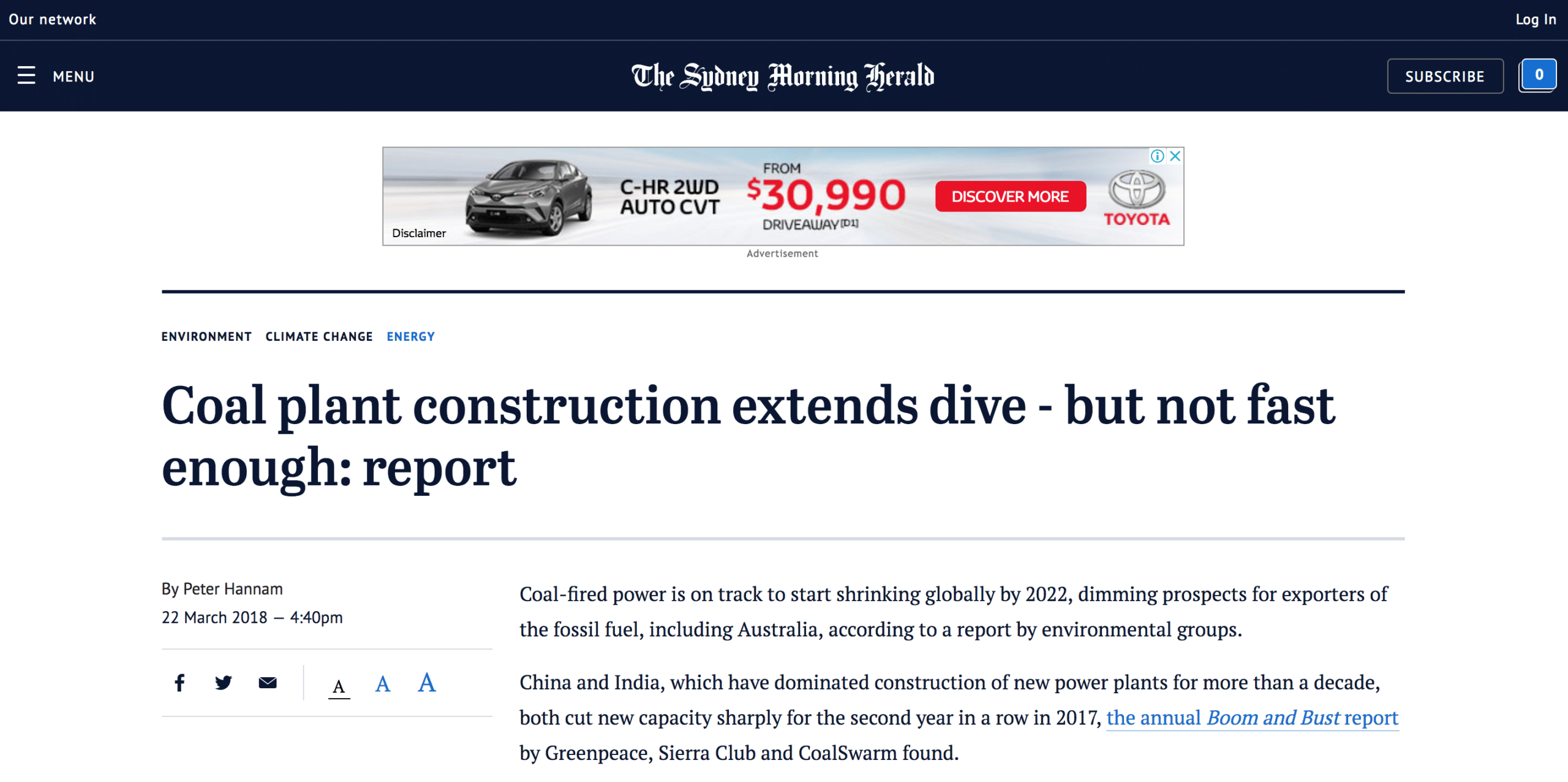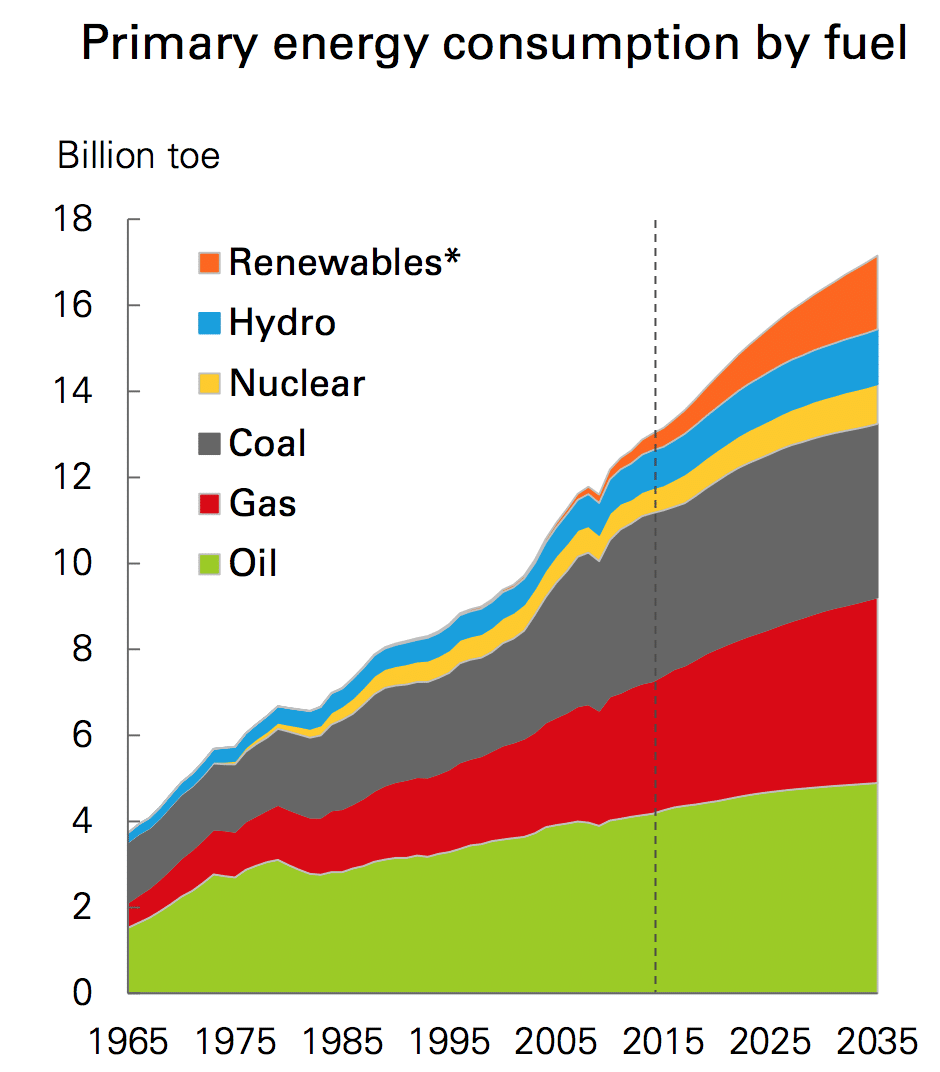Investor News
85% jump in power prices following coal closure
The Australian Energy Regulator has released its report on the impact of the closure of Victoria's Hazelwood brown coal power station (link).
A flurry of green articles has appeared, attempting to portray coal as on the way out and renewables as more capable (and cheaper) than they really are. Here are a couple of examples:
- Report: renewable energy generated more electricity than brown coal
- Coal plant construction extends dive - but not fast enough: report
As usual, there's some fact in amongst the green spin, but the truth, when you take a look at the source data, paints a different picture.
The AER report defines the issue well:
"The increased output of gas and black coal fired generators coincided with increased fuel costs for some of these generators. As highlighted in our NSW report, NSW generators’ black coal costs increased from late 2016, particularly under short term contracts. NSW coal fired generators were also facing problems with coal supply during 2017, which drove higher offers from these generators. At the same time, there have been increases in gas prices in recent years affecting gas-fired generators. Our review also found that brown coal plant set the electricity spot price in Victoria far less often following the closure of the Hazelwood power station. Higher fuel cost generators set the price more often, in particular gas fired and hydro generation, while NSW and Queensland black coal generation continued to set the price a significant proportion of the time, but at much higher prices. Our key finding therefore is that the exit of Hazelwood removed a significant low fuel cost generator which was largely replaced by higher cost black coal and gas plant – at a time when the input costs of black coal and gas plant were increasing. These factors in turn drove significant increases in wholesale electricity prices. Annual average wholesale electricity prices in Victoria in 2017 were the highest they have been since the commencement of the NEM. South Australian average prices were also consistently high."
Hazelwood Closure
With only five months' warning, Victoria's second-largest coal-fired power station closed early last year. The 1600MW capacity Hazelwood power station provided about 5% of the nation's power and about one-fifth of Victoria's output.
Leading up to its closure, its output was 15% more than the combined total of all Wind power generation in Australia.
In the last month before its closure, Hazelwood averaged 1306MW output. Not bad for 58-year-old 'ancient' technology. At that time, Australia's 3900MW of Wind power delivered 29% of its capacity, averaging 1,131 MW for the same period. Our entire fleet of around 2900 state-of-the-art wind turbines could not manage to match 8 'clapped out' coal-fired turbines.
Let's take a look at our first example of green spin.
The AFR published an article on 26 March titled Renewable energy out-generated brown coal and gas over summer.
The article, reporting on data from Green Energy Market's 'Renewable Energy Index' correctly states that 'renewables' outdid brown coal power generation and gas generation.
And here's the misdirection. The use of the word 'renewables'. Simple and effective. The trick?
Renewable energy includes Wind, Solar, biofuels, and hydro. This gives the impression that Wind and Solar are doing well, but they should not be on the same table as dispatchable technologies.
We've mentioned the trend in grid wholesale prices before. We've gone from $30-$40 per MWh here in Victoria to more than double that.
The NEM is a complex beast for most to get their heads around, and few try or care to understand it.
In short, the NEM price is set by the highest bidder in each region. Without enough cheap brown coal power generation to set the price, the price jumped to the next highest bidder. Despite cheaper brown coal running flat out, more expensive black coal and gas set the price most of the time. Not that brown coal owners would be terribly unhappy about receiving higher margins thanks to their more expensive cousins.
Victoria was a net exporter of electricity but became a net importer following the closure of Hazelwood, dependent on black coal and gas from Qld and NSW, hydro from Tasmania and even Wind from SA, on occasion. Yet despite SA's occasional excess wind power, they still maintained the mantle of the highest wholesale cost in the country.
Half-truths
The next example of green propaganda spins the underlying data right from the headline.
In the SMH, the headline read 'Coal plant construction extends dive - but not fast enough: report'.

By the time this article appeared in The Age, its headline had been changed...

The first headline is more accurate.
As an example of how this topic can be spun, the article suggests India is no longer a blocker to 'climate action'. It also suggests coal is in decline in absolute terms. A look at the data reveals otherwise.
For example, India’s commitment under the Paris Agreement is to reduce its CO2 intensity by 35%, which will see its absolute CO2 emissions triple by 2030 from 2005 levels.
That figure is not acknowledged by green activists or reported by certain media.
As for the suggestion that coal is in decline… depends on what they mean by decline.
The 'rate of addition' is in decline, and the percentage share will drop as 60% of new demand is projected to be met by renewables, but in absolute terms, coal is forecast to remain steady.
World energy demand is projected to grow by 30% by 2040, adding the equivalent of China and India.
Despite tremendous additions of Wind and Solar, net additions of coal-fired power will still be 400GW through to 2040, meeting 40% of the increased energy demand. The data contradicts the ‘spin’ of the article. Coal will hold its absolute position while declining in percentage share.

The articles promoting Wind and Solar omit this important context. They try to create a sense that coal is dead, which is wrong.
Returning to the AER report, the key driver of Victoria's skyrocketing wholesale price has been the withdrawal of Hazelwood, with the report noting:
Three of the top four generators that set the price in Victoria are from outside Victoria. During the second half of 2017, half of the time the price in Victoria was set by one of the following: the Victorian Murray hydro power station (Snowy Hydro), the South Australian Torrens Island gas fired power station (AGL Energy), the NSW Eraring black coal power station (Origin) and Bayswater (AGL Energy) black coal power station.
But the simple takeaway is; that less of the cheap stuff meant more of the expensive stuff.